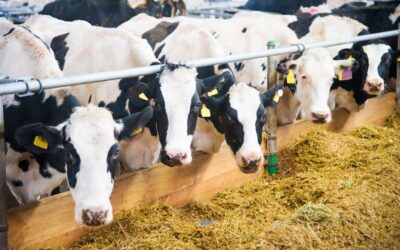Written by: Marissa Vosberg
Within the packaging space, sustainability has transitioned from a buzzword to a formidable movement. In fact, sustainable packaging has come a long way since it appeared as a trend in the 1980s. For example, the Consumer Brands Association reports that 80% of the largest consumer packaged goods (CPG) companies have set goals of using fully recyclable packaging. The sustainable packaging movement has also received legislative support, with nearly 400 municipalities in the United States restricting plastic bag use through bans, taxes, specific recycling programs, and moving toward more eco-friendly packaging materials like paper and cardboard.
Safety & hygiene remain a top priority
Although sustainable packaging has made strides in the last forty years in the United States, the movement is currently limited by consumer preferences and the lack of a uniform recycling infrastructure, leading producers and processors to find opportunities in other areas of the supply chain.
Customer preferences for e-commerce and food hygiene and safety have hindered the sustainable packaging trend. In wake of the COVID-19 pandemic, consumers’ desire for food safety and hygiene has significantly increased. Even as COVID-19 concerns have waned, consumers continue to prioritize it as one of the most important variables of product packaging. These demands correlate to more plastic-packaged food and groceries, as well as expanded use of disposable utensils. Today, packagers are grappling in the balance between hygiene and calls for sustainability.
Online shopping contributes to waste
Likewise, e-commerce is other significant trend affecting packaging today, even outranking sustainability. This is a fundamental issue for the sustainable packaging movement as e-commerce creates 4.8 times more packaging waste than corresponding in-person shopping. The trend and its ensuing waste necessitates improvements in material design to achieve sustainability targets and minimize the environmental impacts of packaging. However, customers are correspondingly demanding products with less sustainable materials, e.g., plastic, to meet their hygiene and food safety preferences, representing a dilemma for packagers and a hinderance to the sustainable packaging movement.
Consumers’ online purchasing behavior also reflects a notable shift in how they value sustainability. When shopping in-person, 77% of consumers make a conscious decision to purchase more sustainable products. However, in the online space, consumers are more sensitive to other variables like price, quantity, and delivery time than they are to sustainability. Coupling this decreasing importance with the greater environmental impact of e-commerce, packagers are at an impasse. Although they can innovate to find new, more sustainable materials to package e-commerce products, this requires significant financial investment and is not the best solution in a space where consumers are already price sensitive.
Infrastructure limits innovation
Further complicating the drive towards sustainable packaging is the recycling infrastructure within the United States. With more than 9,800 recycling systems across the United States each with unique policies, what is ‘recyclable’ is dependent on a consumer’s locale. Which materials can be recycled is influenced by state, county, and city rules as well as the time of year, making recycling a more complex issue than most consumers would surmise.
Because recycling is locale-specific, it must compete for funding with other local objectives like infrastructure, public safety, and schools. Consequently, 20,000 communities within the United States must decide not only what can be recycled, but if the community should recycle at all. Therefore, local stakeholders can influence these decisions and what is recyclable can vary greatly depending on the geography. When these differences are not communicated to consumers, recycling opportunities are missed, and viable recycling loads can be contaminated with materials not acceptable in the local geography.
Keeping these factors in mind, packagers cannot rely on end users to complete the sustainability circle. Even when packaging is labelled as ‘sustainable’ or ‘recyclable’, many of these claims depend on the ability and willingness of customers to recycle the packaging, which is not always achieved.
Prioritizing where we can make the most impact
These limitations necessitate sustainability in other areas of the value chain. Because packagers have little control on American recycling infrastructure and consumer trends, sustainable packaging has reached its peak. However, hope for sustainable food chains is not lost. Instead, a creative solution is needed. One that recognizes other areas within product life cycles that can be made more sustainable, such as on-farm interventions.
This is where Ever.Ag’s sustainability team steps in. We seize opportunities within food chains to promote sustainability and recognize synergistic benefits to ultimately deliver a more sustainable product to end users. By working with both producers and suppliers, we help clients identify areas for investment to lower environmental impacts. The result is an eco-conscious, data-backed product that allows producers and processors to meet their sustainability goals even with current limitations to sustainable packaging.


